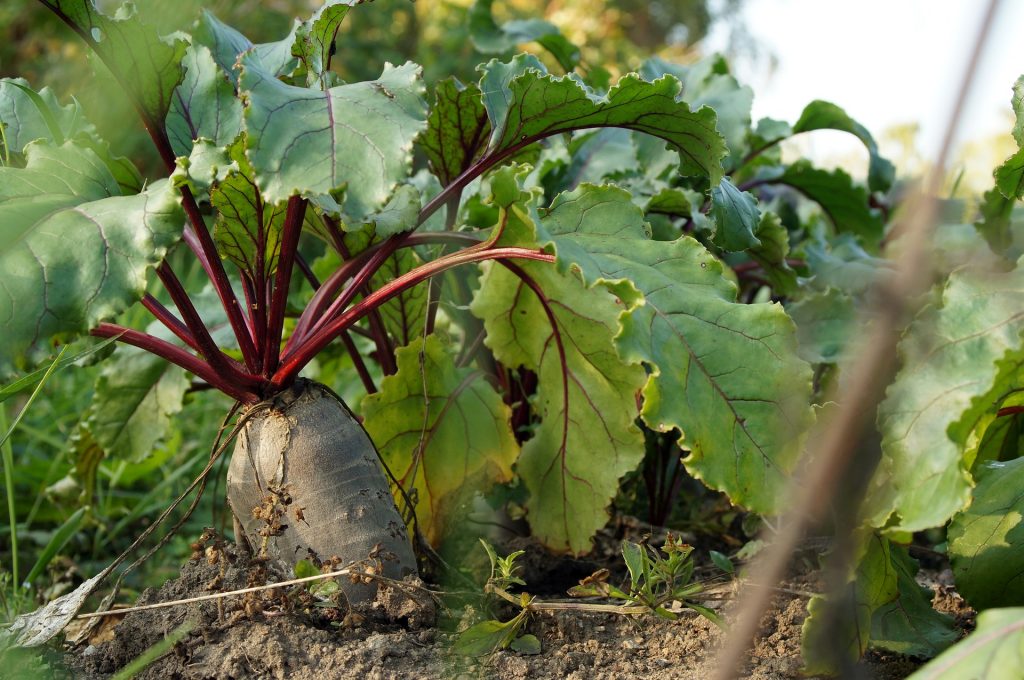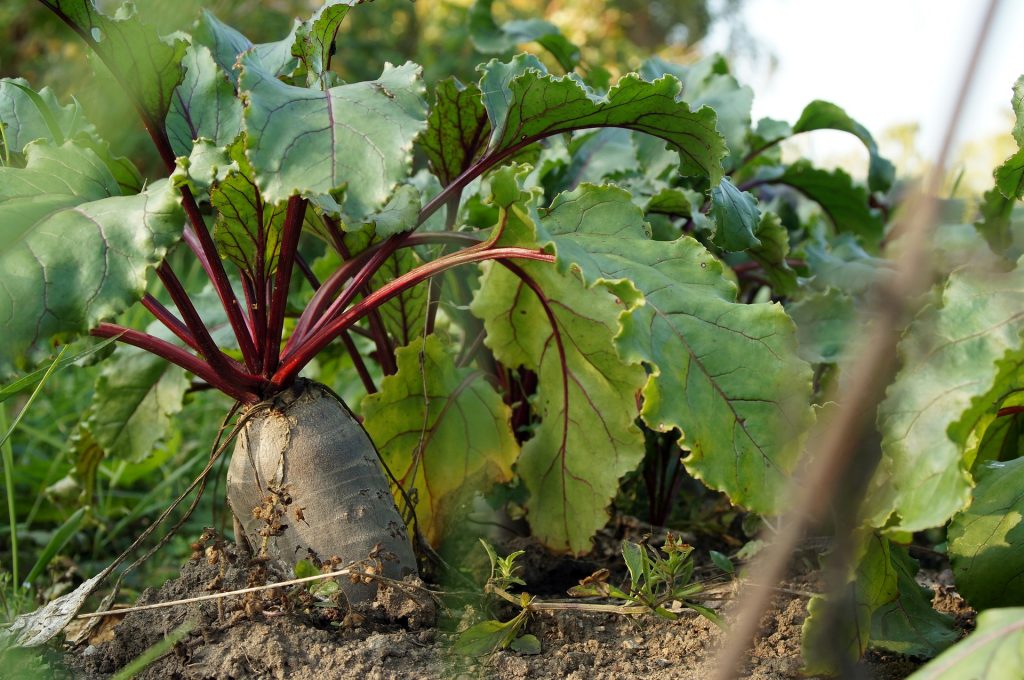Gardening can be an enjoyable and rewarding experience, regardless of skill level!
However, to get the most out of your gardening efforts it is necessary to have a solid foundation in basic practices.
Water is one of the most essential parts of gardening – not providing enough or too much water can have serious consequences on your beetroot plant.
In this write-up, you can delve into how much water beetroot needs in order to produce healthy and fruitful yield.
Not just that, you’ll learn more about what kind of watering practices you should adopt when growing this root vegetable.
Know your plant – Beetroot

Growing beetroot at home can be a rewarding experience, when you know plant’s requirements.
- Choose fertile soil, you can add old compost or organic matter, and making sure your plant gets enough sunlight.
- Sow the seeds in drills, between 6-8 inches apart, and keep well watered as they grow.
- Beetroot plant thrives in a sandy-loam soil, which should be free-draining and rich in organic matter.
- This root vegetable plant also needs plenty of sunlight, so make sure it’s planted in an area that receives at least 6 hours of sunshine a day.
- Beetroot is best grown in cooler temperatures, and soil that has been basked in the light of the sun. Make sure your soil temperature remains between 60-85°F for optimal growth.
During its blooming period, this plant requires consistent watering in order to yield the most fruitful outcome. Aim for at least 1 inch of water per week to ensure healthy and vibrant growth.
Also Read: What is Eating My Beetroot Leaves?
How Often Should I Water Beetroot?
To ensure that your beetroot grows vigorously, it is imperative to water the soil every 2-3 days of its growing season. Keeping the earth moist allows for optimal growth and development of healthy roots.
When the sun is scorching, you may need to water your plants up to twice a day in order for them to remain healthy.
When temperatures are cooler or your plants aren’t in the midst of active growth, it’s best to water them just once a week.
If your plants appear dehydrated or wilted, make sure to give them a nice drink of water.
It’s critical to remember that excessive water can not only lead to nutrient leaching, but it can also cause root rot. Therefore, take care to ensure you don’t give your beetroot plant too much water.
Also Read: Why Are My Beets Growing above Ground?
How to avoid over-watering beet root?
To ensure that you don’t give your beetroot plants too much water, use a soil moisture meter to check the level in the ground. After it reads “dry”, it’s time to provide them some hydration!
Besides, mulching is an excellent way of trapping water and guarding against dehydration.
How to avoid under-watering beetroot?
If the soil is too arid, beetroot can go through water and nutrient deficiency. Regularly check your plants for wilting or drooping signs, and give them some much-needed hydration if it’s needed!
An irrigation system can be a great asset to your garden, ensuring accurate and consistent water delivery for all of your plants. Not only does this save you time trying to keep track of when the last watering was, but it also reduces the chance that any plant will suffer due to under-watering.
How much water does beetroot need?
During hot conditions, make sure to consistently supply beetroot with 1 inch of water per week or even twice a day. As opposed to the hotter months though, during cooler times when your plants are less active, you can reduce watering down to once a week for optimal growth and health.
Do you water beetroot every day?
No, you do not need to water your beetroot every day.
During the growing season, strive for approximately one inch of water per week and reduce this to once a week if your plants are not actively flourishing or when temperatures begin to plunge. Meanwhile, using a soil moisture meter can be beneficial in assessing the quantity of water below ground level and accordingly adjusting your irrigation technique.
Water your beetroot plant; if they appear wilted or droopy, this little care can transform their appearance.
Install an irrigation system to guarantee your plants are consistently hydrated and healthy.
Does Beetroot need a lot of water to grow?
Not really.
Beetroot plants, like many vegetables, favor a soil that is always damp but not waterlogged.
What kind of water is best for beetroot plant?
Plant growth is generally favored with soft or filtered water. Softened water eliminates minerals and salts, while cleaning agents like chlorine, iron, and other impurities are eradicated from your filtered supply; this helps plants to flourish!
To ensure that your plants are flourishing, use a water filter when utilizing tap water to eliminate any unwanted substances from the liquid before pouring it on the soil.
By taking this step, you can significantly reduce the chances of leaf damage or root scorching caused by high levels of salts and minerals or contamination.
Moreover, rainfall is an optimal source of hydration for plants because it is naturally filtered and softened as it passes through the atmosphere before being absorbed into the soil.
Also Read these articles:
- How Much Sunlight Does Spinach Need?
- How Much Water Does Spinach Need to Grow?
- Why Are My Potato Plant Leaves Curling?
- How Deep Do Potato Roots Grow?
How to Take Care of Beetroot Plant at Home?
1. Plant beetroot seeds in well-draining soil, in a location that gets full sun. If your soil has poor drainage, amend it with organic matter such as compost or aged manure.
2. Water the beetroot plants at regular intervals to keep the soil consistently moist. Make sure you water deeply and avoid shallow watering which can lead to root rot and will make the plants more vulnerable to pest infestations.
3. During dry spells, water the plants once a week, if not more often depending on the weather conditions and temperature of the region you are growing in.
4. Fertilize beetroot plants every 2 weeks with a balanced granular fertilizer or liquid fertilizer solution. The amount and type of fertilizer will depend on your individual soil needs and should be adjusted accordingly.
5. Keep weeds away from your beetroots by regularly weeding or using mulch around them; this will help conserve moisture and prevent competition from unwanted vegetation for sunlight, nutrients and water resources that could otherwise stunt their growth and development.
6. Beetroots require high levels of potassium for optimal growth, so add potassium sulfate or wood ash to the soil near your plants during springtime when they are actively growing and need it most for effective growth and development; this will help promote strong root systems as well as healthy foliage growth throughout the summer months when conditions become drier overall due to adverse weather conditions such as drought or heatwaves.
7. When harvesting your beetroots, be careful not to damage their roots or leaves; use sharp scissors to snip off their greens from the stem without uprooting them from the ground entirely unless absolutely necessary (e.g., if you need to move them). Carefully pluck out any remaining leaves attached to the root after harvesting without causing damage as well; these can then be cooked up separately for an additional nutritious side dish!
Conclusion
Watering beetroot plants is an important part of their growth and development.
It is essential to give your Beetroots a steady supply of water in order for them to thrive, since they prefer soil that is moist but not soggy. As such, make sure you are watering them on a regular basis and evenly distributing moisture throughout the soil.
During hot days, it is essential to increase your watering frequency in order to keep your plants healthy and vibrant.
Additionally, be sure to fertilize with balanced granular fertilizer or liquid fertilizer solution every 2 weeks in order to provide adequate nutrients for optimal growth and development.
If you devote the necessary time and effort to these straightforward techniques, you will soon enjoy a delicious crop of succulent beetroots.

